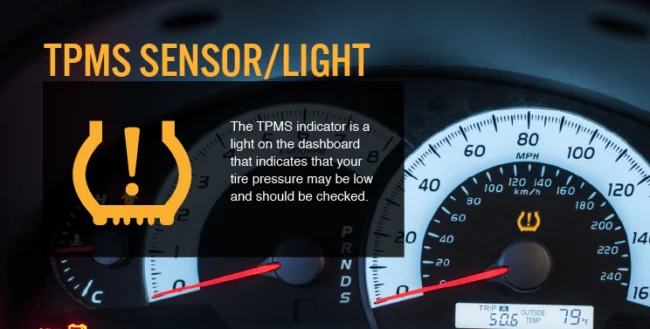
How Often Should I Check My Tyre Pressure?
Tyre safety is about more than just buying good quality tyres, it also involves regularly checking tyre pressure and tread depth. If you don’t check your tyre pressure at least once a month, you should continue reading.
Whether you’re a student, business owner or a stay-at-home parent, tyre checks should be non-negotiable. While you may not always notice air escaping from your tyres, it generally goes down by at least two PSI every month. Tyres tend to lose even more pressure during warm weather so you need to pay close attention before it’s too late.
Checking tyre pressure is inexpensive and really simple; anyone can do it. We recommend that you check all your tyres at least once a month, including the spare. You can find the correct tyre pressure for your vehicle in the owner’s manual, on the inside of the driver’s door or inside the petrol cap. Use a tyre pressure gauge if you have one or alternatively, visit any of our centres for a FREE tyre safety check.
Under Inflated Tyres
Under inflated tyres can affect your vehicle performance especially in terms of fuel consumption, increased stopping distances and poor handling. It can also lead to tyre failure and pose a real threat to vehicle safety as the risk of a tyre blow out is four times more likely.
If your front tyres are under-inflated, you will experience understeer while under inflated rear tyres increase oversteer. When all your tyres are under inflated, you will notice a general sluggishness in your steering ability. If this should happen to you, our advice is to get your tyres checked immediately.
Over Inflated Tyres
Over-inflated tyres are just as damaging, dangerous and expensive. When you overinflate your tyres, they essentially have a smaller contact patch which can lead to a loss of traction and longer braking distances. It also causes heavy and uneven wear across the central part of the tyre leading to a much shorter lifespan which means costing you in the long run.
How Tyre Pressure Affects Safety
Driving on under-inflated tyres reduces endurance which can lead to deterioration and possibly result in a rapid deflation. It is very dangerous when tyres are under inflated at 7 psi (0.5 bar) or more. The risk of aquaplaning is also increased drastically if tyres are 30% below the recommended pressure. Once again, the lower the tyre pressure, the higher chance of aquaplaning.
In terms of road holding, under inflated tyres affect the vehicle’s steering making it less precise. If you can take a bend at 62 mph (100 km/h) with a tyre pressure of 29 psi (2.0 bar), the statistics drop for under inflated tyres to 54 mph (87 km/h) at 15 psi (1.0 bar). That is approximately 8 mph (13 km/h) less which simply means that lower tyre pressure equals worse road holding.
When it comes to braking ability, tests have shown that the braking distance from 56 mph (90 km/h) to 43 mph (70 km/h) is 40 metres at 29 psi (2.0 bar). Compared to under inflated tyres, the distance is 45 metres at 15 psi (1.0 bar) which is 5m longer. Last, but certainly not least, tyres that are under inflated by 15 psi (1 bar) increase rolling resistance which leads to approximately 6% more fuel consumption.
Incorrectly inflated tyres will show increased wear at the points where they make contact with the road while a correctly inflated tyre will wear evenly across the entire width of the tread. All of this can be avoided through an effective tyre maintenance routine. Get your tyres checked and fixed before you cause any damage.
Step-by-Step Guide To Checking Tyre Pressure
If you don’t have time to visit a service centre to check your tyres, you could do it yourself. Simply follow these instructions and you’ll be on your way in no time.
- While many petrol stations provide air for free, some do charge a small fee
- If you must pay, always remove your tyre valve caps beforehand as you only have a limited time to use the machine
- Set the compressed air machine to the right tyre pressure and put the hose end over the valve
- The machine will indicate what the current pressure of that tyre is and inflate accordingly
- It will beep when done and you can release the hose and move on to the next tyre
Don’t forget to reset the required pressure on the machine if your front and rear tyre pressures are meant to be different.
Tyre Safety With Elite Garages
With everything we’ve discussed, there are still so many drivers who fail to weigh up the costs and associated risks of ignoring this important step. Even with awareness drives like Michelin’s “Fill up with air campaign”, it’s apparent that many motorists pay little attention to tyre pressure.
Take a look at these shocking results:
- Three-quarters of UK drivers were running on under-inflated tyres*
- Three per cent of cars checked in the UK had a punctured tyre*
- More than half of UK drivers had tyres that were classified as dangerously under-inflated* (7 psi or more below the recommended pressure)
If you suspect that your tyres are damaged in any way, visit one of our Elite branches nationwide for a FREE tyre safety check. We always offer excellent customer service and added value you’d expect from a family run business. Our prices are very competitive with no hidden costs or small print.
* Michelin “Fill Up With Air” campaign data
About Us
Opening Times
Saturday : 8:30–4:00
Sunday : closed
More Information
Contact UsCustomer Information Pack
Check MOT Due Date
Free MOT reminder
Careers



Leave a Comments
You must be logged in to post a comment.